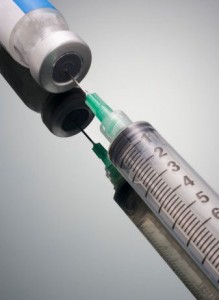 What happens when you combine triglycerides with testosterone?
What happens when you combine triglycerides with testosterone?
As you know, part of the problem with ingesting testosterone orally is that when it first passes your liver, it’s like Mike Tyson biting off parts of Evander Holyfield’s ear. It eats it up and spits it out, thus inactivating the hormone to some extent. But a group of wacky scientists at the University of Washington in Seattle came up with a way of tinkering with this. They attached a triglyceride molecule to a testosterone molecule (TTC or testosterone-triglyceride conjugate). They looked at single-dose pharmacokinetics in rabbits. You see, rabbits love taking testosterone; it makes their humping even more frequent (kidding). Rabbits are a good animal model for studying this. They gave the rabbits a dose of two, four or eight milligrams per kilogram body weight of TTC. Translate that for a 200-pound human being and the dose is roughly 181, 364 and 727 milligrams, respectively. Oral TTC was compared to testosterone undecanoate (TU). They found that oral TTC produced a fast and significant increase in serum testosterone. Furthermore, maximum serum testosterone concentrations were four and eight milligrams per kilogram doses. And to top it off, the AUC, or area under the curve, was 1.8 to 2.6 times greater with TTC than TU at both doses. So, if you’re not someone who likes the intramuscular stuff, perhaps an oral that has a triglyceride molecule attached might be more attractive.
Testosterone Good for the Heart?
In a study that will make you think twice about whether androgen administration is bad for the heart, German scientists looked at the effects of testosterone undecanoate (TU), 5 alpha-dihydrotestosterone (DHT), or placebo in heart muscles removed from rats. They used a model of damage called “ischemia-reperfusion” injury. You can think of this as follows: Imagine cutting off blood flow to part of your heart muscle (this is the ischemia) and then releasing it so you get an onrush of blood (that’s the reperfusion). This causes a great deal of injury to the heart muscle. What happens if an animal has been taking testosterone? In essence, it helps! That is, the rats were better able to recover contractile function of the damaged muscle if given the anabolic steroids. Thus, at least in this animal model, testosterone helps alleviate heart muscle damage.
Testosterone Dose Most Important
We now have conclusive evidence that taking testosterone can increase fat-free mass and muscle fiber cross-sectional area, reduce body fat, blah blah… But we also know it has an anabolic effect even if you don’t work out. The amount that this testosterone translates into a performance benefit was tested by my favorite androgen researchers at UCLA. Dr. Tom Storer, a well-respected exercise physiologist and Dr. Shalender Bhasin, MD, who spearheaded the initial landmark paper on testosterone’s anabolic effects a few years ago, looked at the dose-dependent effects of our favorite androgen.
To make a long, complicated story short and sweet, they took normal healthy men (18-35 years) and gave them weekly injections of 25, 50, 125, 300, or 600 milligrams of testosterone enanthate (TE) for 20 weeks. What they found was intriguing. Leg strength and power were related to the dose of TE. Meaning, the higher the dose, the greater the strength and power gain. However, fatigability of the muscles was not related to testosterone dose. Clearly, if muscle cross-sectional area goes up due to taking TE, then strength and power should go up.
Now, fatigability is a different story. Having more mitochondria (the part of the cell that generates ATP aerobically) should improve fatigability of skeletal muscle. However, unless these guys are doing regular lower body cardio, then there’s no reason that relative fatigability should change. There are a multitude of other factors that I’m sure affect strength, power and endurance. However, suffice it to say that taking TE will make you bigger, faster and stronger!
Biking Bad for Below the Belt Partying
You’ve probably heard reports about how sitting on a bicycle makes your groin numb. It’s as if someone put his thumb on the wrong pressure point and ended up with a flag that can only go to half-mast. Leave it to scientists to study this wacky phenomenon. In the Journal of Andrology, a health assessment study was performed on a police bicycle unit. On average, they rode their bikes 5.4 hours per day (who are these guys— Lance wannabes?). Furthermore, 91 percent of them complained of occasional groin numbness. Each subject wore what they called a “RigiScan Plus Rigidity Assessment System” for one regular sleep session.
Here’s what they found. The percentage of the sleep session that the cyclists recorded a woody was 27.1 percent. Compare that number to the non-cyclists who were standing at attention 42.8 percent of the time! How long each subject maintained the woody was directly related to how much they sat on the bike. In other words, the more they sat on the bike, the fewer erections they got. I realize cycling is great cardio work and helps you burn fat, but if you value the function of your nether regions, keep the cycling to an hour a day. Also, as a substitute, the recumbent bike at your local gym does take some stress off the groin area. It’ll keep your family pride free of undue pressure; thus, performance anxiety will be less apt to be a concern.
Protein Elevates IGF-1, Promotes Nitrogen Retention
When University of Minnesota scientists put diabetics (type 2) on a high-protein weight maintenance diet, they found some pretty intriguing information. First, it was a five-week intervention in which the subjects went from a 15 percent to a 30 percent protein diet. The scientists found that calcium excretion went unchanged. They also found that serum growth hormone and IGF-1 were increased with a 30 percent protein diet. Furthermore, it seemed that at least in these subjects, eating more protein resulted in a greater retention of nitrogen (i.e., it was anabolic). So this adds another nail in the proverbial coffin of the theory that “all calories are the same.” Eating more protein, even without exercise, may have an anabolic effect.
source:musculardevelopment.com
